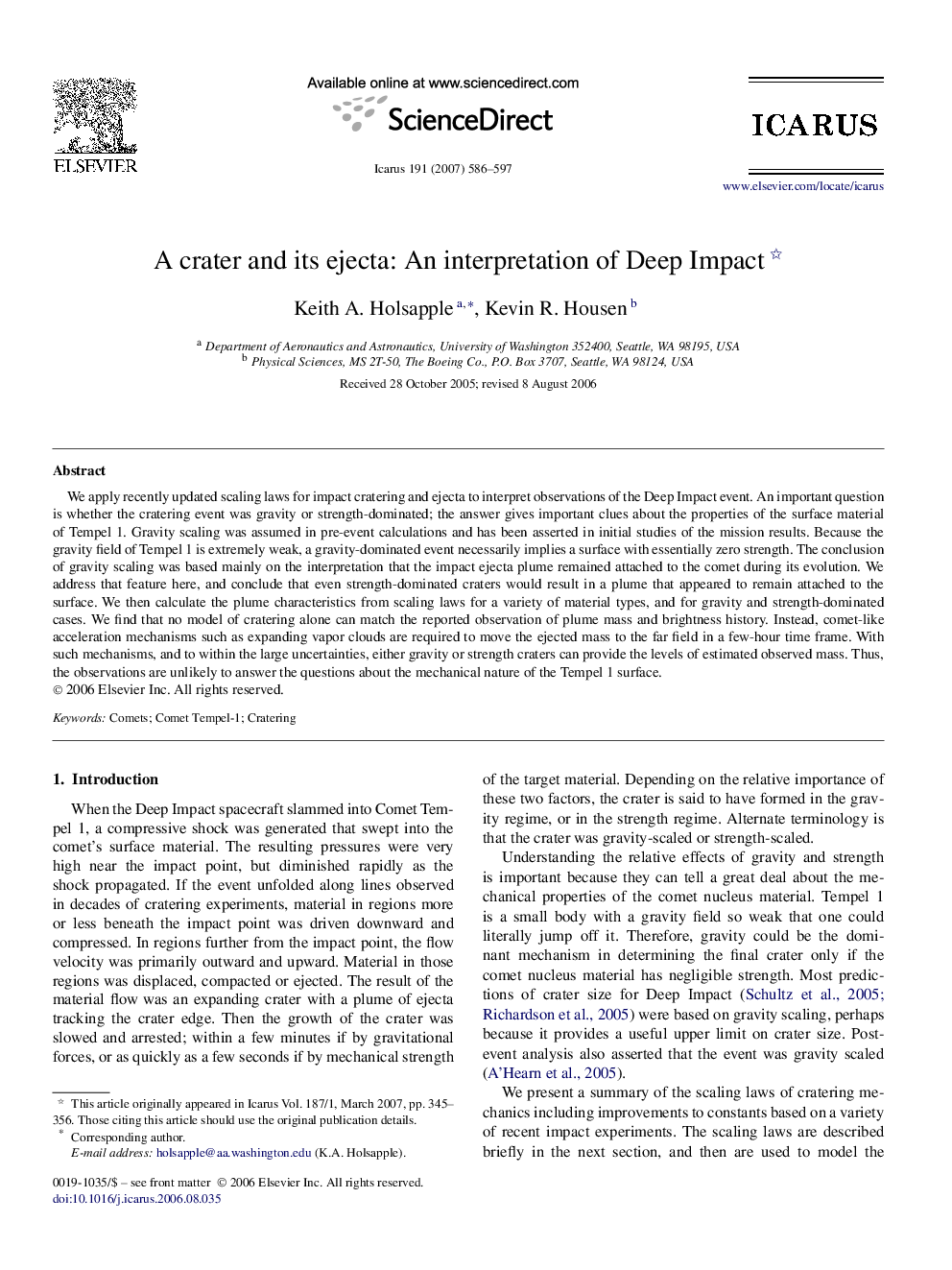| کد مقاله | کد نشریه | سال انتشار | مقاله انگلیسی | نسخه تمام متن |
|---|---|---|---|---|
| 1775280 | 1021188 | 2007 | 12 صفحه PDF | دانلود رایگان |
عنوان انگلیسی مقاله ISI
A crater and its ejecta: An interpretation of Deep Impact
دانلود مقاله + سفارش ترجمه
دانلود مقاله ISI انگلیسی
رایگان برای ایرانیان
موضوعات مرتبط
مهندسی و علوم پایه
علوم زمین و سیارات
علوم فضا و نجوم
پیش نمایش صفحه اول مقاله

چکیده انگلیسی
We apply recently updated scaling laws for impact cratering and ejecta to interpret observations of the Deep Impact event. An important question is whether the cratering event was gravity or strength-dominated; the answer gives important clues about the properties of the surface material of Tempel 1. Gravity scaling was assumed in pre-event calculations and has been asserted in initial studies of the mission results. Because the gravity field of Tempel 1 is extremely weak, a gravity-dominated event necessarily implies a surface with essentially zero strength. The conclusion of gravity scaling was based mainly on the interpretation that the impact ejecta plume remained attached to the comet during its evolution. We address that feature here, and conclude that even strength-dominated craters would result in a plume that appeared to remain attached to the surface. We then calculate the plume characteristics from scaling laws for a variety of material types, and for gravity and strength-dominated cases. We find that no model of cratering alone can match the reported observation of plume mass and brightness history. Instead, comet-like acceleration mechanisms such as expanding vapor clouds are required to move the ejected mass to the far field in a few-hour time frame. With such mechanisms, and to within the large uncertainties, either gravity or strength craters can provide the levels of estimated observed mass. Thus, the observations are unlikely to answer the questions about the mechanical nature of the Tempel 1 surface.
ناشر
Database: Elsevier - ScienceDirect (ساینس دایرکت)
Journal: Icarus - Volume 191, Issue 2, Supplement, 2007, Pages 586-597
Journal: Icarus - Volume 191, Issue 2, Supplement, 2007, Pages 586-597
نویسندگان
Keith A. Holsapple, Kevin R. Housen,